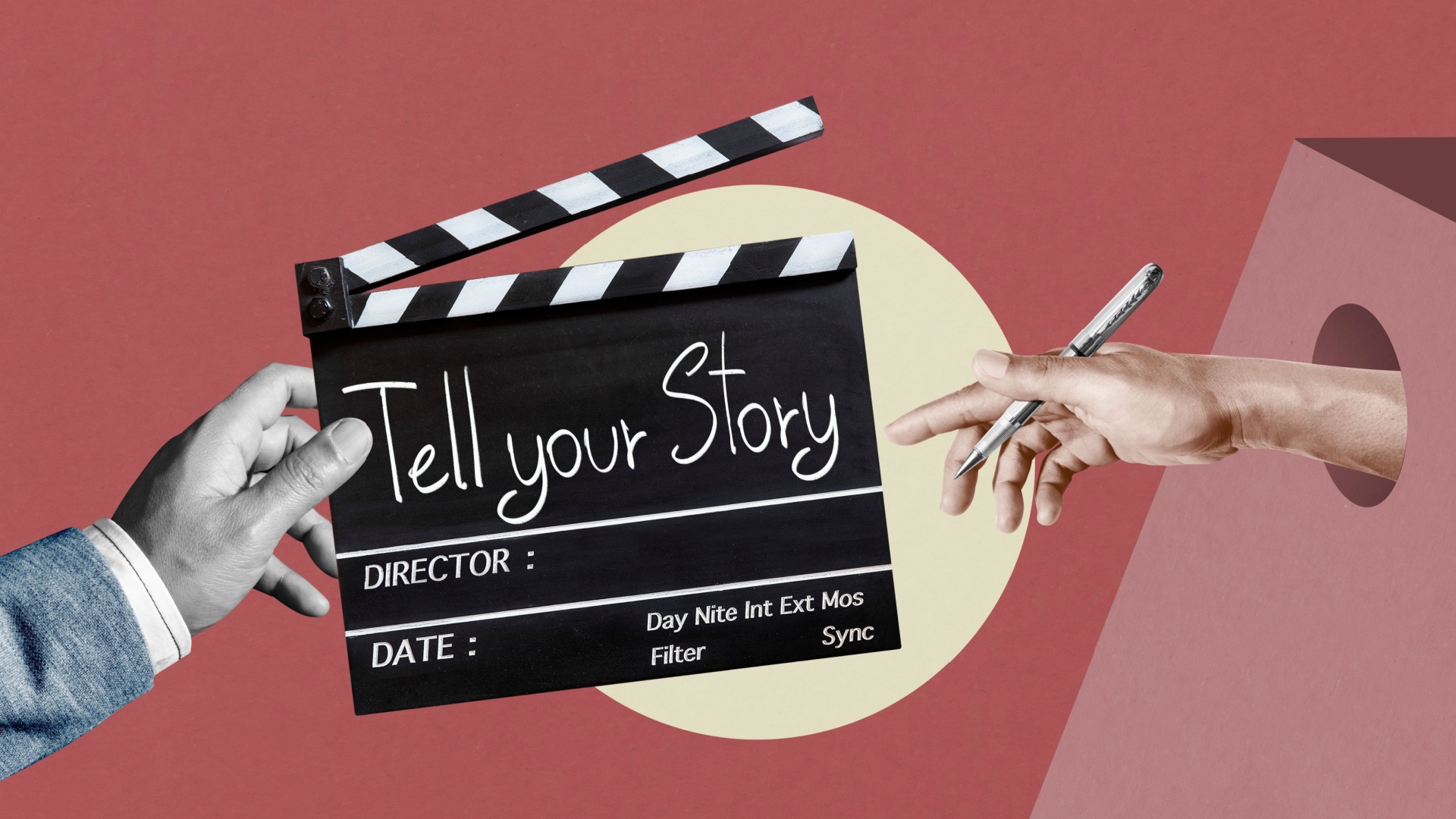Great brand stories aren’t luck. They’re built through research, creativity and customer insight. Few brands get it right on the first try, but with the right approach, your message can resonate and drive results.
Strategic copywriting plays a key role in this process. It’s more than writing with your audience in mind — it’s the deliberate use of language to spark emotion, shape perception and inspire action.
What is strategic copywriting?
Strategic copywriting is the practice of combining storytelling with psychology to connect with and convert prospective customers. In a digital world where attention is measured in seconds, capturing interest and earning trust with consumers has to happen quickly and organically.
Every headline, subhead, social post and call to action (CTA) makes a difference. Through strategic copywriting, your brand is better equipped to craft a cohesive narrative that communicates:
- What you do.
- Who you are.
- Why customers should care.
It also differentiates your brand from its competitors.
Strategic copywriting + brand story in action
Today’s top brands have invested heavily in their stories — and those stories offer valuable lessons in strategic copywriting.
Liquid Death
This brand has turned a simple product, canned water, into a rebellious movement. Its copy is deliberately edgy, irreverent and wildly entertaining. Their tagline, “Murder Your Thirst,” isn’t just provocative. It’s a clear embodiment of the brand’s anti-establishment vibe.
Water, then, is presented as almost a hardcore lifestyle choice rather than mundane sustenance. Every product description, ad and social post plays into this character: gritty, bold and absurd. It’s not just water, it’s water with attitude.
Vuori
This athleisure brand’s story is about effortless performance, coastal California lifestyle and mindful living. Rather than focusing solely on high-intensity athletics like other athleisure brands, Vuori’s messaging emphasizes versatility: clothing that transitions seamlessly from workout to at-home to weekend.
Its marketing campaigns consistently support a brand story that’s not just about apparel, but how to achieve a balanced, movement-rich life. Copy like “Built to move in. Styled for life.” and “The new perspective on performance apparel.” captures Vuori’s relaxed yet purpose-driven ethos.
These brands have built loyal followings that go far beyond their products. The copy — not just the design or packaging — shapes how we see them. When strategic copy aligns with a clear brand message, it creates resonance. That resonance turns casual followers into loyal customers.
Dig deeper: 5 tips for balancing ‘push’ and ‘pull’ in content marketing
Strategic copywriting: The cornerstone of your brand story
Think of your brand story as a three-act structure:
- Act 1: Who you are and why you exist.
- Act 2: The challenges your audience faces.
- Act 3: How your brand helps them overcome those challenges.
Your copy brings this arc to life. It transforms product information and feature lists into a narrative that people relate to. Your copy is also how your audience comes to understand your value proposition, helping you avoid blending into the crowd of competitors.
But here’s the thing: You can’t just wing it. Many brands attempt to write a brand story based on assumptions, feelings or product benefits.
They might write their brand guide in an afternoon or over a few months, but if it’s not based on anything circumstantial, it won’t land with prospective customers. Instead of just winging it, do this.
1. Start with audience-centric messaging
Before writing a word, you must know who you’re speaking to and what they care about. Many brands skip this step and jump straight into content. But without audience insights, your message is built on assumptions, not impact.
Use these tactics to inform your copy:
- Customer interviews and surveys: Capture pain points, objections and exact words your audience uses. Google Forms is sufficient for this, but you can get fancy and hire a market research firm if you wish.
- Search and social listening: What phrases appear in online communities or product reviews?
- Behavioral analytics: What pages do people visit on your website? Where do they bounce? What content converts? Google Analytics and Google Search Console are the best sources of this information.
These insights don’t just shape your story, they give you the language to tell it in your customer’s voice. And your website data can show you what topics and products people care about most.
That alignment between what you say and what your audience wants is where strategic copywriting gets its magic.
2. Define your brand’s core message
Strategic copywriting is only as effective as the message it’s built on. That’s why you will often see marketers talking about finding your “why” and it’s true. The purpose behind your brand is more important than your product features, costs or perks.
Once you define your core message, your copy will start to flow. Just as your audience will get inspired by your brand’s purpose, you and your marketing team will be inspired to create content consistent with that message. And it becomes the backbone of all your communications.
Following your marketing research (audience surveys and analysis), start crafting a strong brand message. You should be able to answer – with clarity and confidence – these questions:
- What do you offer?
- Why does it matter?
- What makes your approach different?
- How do you improve your customer’s life?
Let’s say you run a boutique skincare company that makes plant-based products for sensitive skin. Through customer surveys, you’ve discovered your audience is tired of synthetic ingredients. Your core message might read something like:
“(Brand) offers a line of dermatologist-approved, plant-powered skincare products designed for sensitive skin. Many people with sensitive skin often feel left out of the beauty industry; we believe everyone deserves products that are safe, effective and feel good to use. We use no fillers or synthetic irritants and formulate with transparency. We help our customers finally feel comfortable and confident in their skin, with a simplified skincare routine that works.”
Your core message may require some fine-tuning, especially following customer feedback, but establishing at least an MVP version at the beginning will set you on the right path. From there, consistency is key. Your messaging should feel familiar whether you’re writing blog articles or TikTok captions. Repetition builds recognition and recognition builds trust.
3. Turn features into benefits, benefits into impact
Impact matters more than features. While product teams focus on what a tool does, it’s the benefits — and the impact — that sell.
Take project management software, for example. One feature might be “Automated task reminders,” which benefits business owners by ensuring they “never miss a deadline.” However, this feature’s impact is that the business owner can finish projects faster, resulting in happier clients, more return business and a more positive reputation as a provider.
Don’t fall into the bad habit of focusing your copy on product features. Your competitors offer many of these things, too. Instead, communicate the outcome and impact customers can expect from those features.
Strategic copywriting doesn’t just tell users what a product does. It shows them how their life improves because of it. The best copy is outcome-focused and answers the customer’s question, “What’s in it for me?”
Dig deeper: How to harness storytelling’s impact in B2B marketing
4. Use storytelling to humanize your brand
When I wrote copy for clients, one of my onboarding questions was, “What’s one story that highlights something interesting about your brand?” I didn’t ask for their brand story since most didn’t have one yet, or it wasn’t clearly defined.
I asked that question to uncover the history and character behind the brand — how it started, who’s behind it or why customers chose it. Knowing this helped me see the brand as human, which made it easier to reflect that in the copy.
For example, I worked on an SEO and UX project for Maker’s Mark, where the brand story was at the forefront of the entire site redesign and content refresh. This brand emphasizes legacy, craftsmanship and family. You can find nods to its history sprinkled throughout its website. For instance, its Distillery experience tells the story of Margie Samuels, who designed the bottle and the now-iconic red wax seal.
Customers don’t connect with products. They connect with people, stories, progress or problems. Here are some ways to use storytelling to humanize your brand:
- Tell your founder’s story: Where did the idea of your company come from? Who thought of it? What has changed between then and now?
- Share customer stories: What’s a funny, moving or inspirational outcome from a customer who chose to work with you?
- Account the day-to-day: What has your brand been up to lately? Are you involved in the community? Any upcoming events? Are you staying on top of the trends? What does a “day in the life” look like for someone who works at your company?
When woven into your brand copywriting, these stories add personality and a human touch. This evokes emotion in prospective customers, making your brand more memorable.
4. Create continuity across the funnel
Strategic copywriting isn’t just repeating your core message — it’s about adjusting it to match where users are in their buying journey. Great copy communicates your value and the next step to take, from first click to final conversion. Here’s what that looks like:
Top of funnel
Draw in users based on their high-level search, whether that’s:
- A challenge they are facing.
- Questions they’re asking.
- Information they’re searching for.
Think of content like, “How to Create an Invoice” or “Am I Allergic to Lotion?” This isn’t the time to push your brand. Instead, weave it in naturally within the content.
Middle of funnel
- Offer value. If people are searching for solutions, this is where you can present your brand as a strong contender or a better competitor alternative.
- This is content like: “(My Brand) vs (Competitor Brand): Which is Best?”
- “Most Affordable (Product) for (Audience)”
Bottom of funnel
- This is where the conversion usually happens.
- The content leading up to this point should have built trust with the user.
- Now, it’s about reinforcing that trust with proof and reassurance through: Testimonials.
- Reviews.
- Strong, benefit-driven CTAs.
Your copy should align with your brand narrative at every stage — but how prominently you showcase your brand depends on where the user is in their journey.
- Top-of-funnel content educates.
- Middle-of-funnel content builds trust and helps users compare options.
- Bottom-of-funnel content reassures and drives the sale.
Dig deeper: The art of natural funneling: How to lead your readers without forced CTAs
But, make sure the message matches the medium
One of the most overlooked principles of effective copywriting is context. Not every platform requires the same style, tone or content type. The core message should remain consistent, but the format may change. For example:
- A website will mainly consist of concise headlines, scannable body copy, CTAs and blog articles.
- Social media posts will be more conversational, with punchy captions, emojis and community engagement-type language.
- Paid ads typically communicate one core offer with one outcome and one clear CTA.
- And the list goes on and on.
Make sure you understand the platform on which you are posting. Each platform has its best practices and nuances. Keep your core message consistent, but adapt your content based on the platform’s environment and the audience.
5. Create a brand voice guide (and use it)
Consistency is one of the most powerful tools in copywriting — and it starts with documentation. One of my core services as a copywriter was developing brand guidelines. After weeks of research, interviews and refinement, clients walked away with a clear guide to executing their messaging consistently and on-brand.
This is far from exhaustive, but every brand guide should include:
- Brand tone.
- Dos and don’ts for language.
- Sample phrases, headlines and CTAs.
- Messaging pillars.
- Values.
- Brand story.
With a brand guide in place, staying consistent in your messaging will be easier, no matter who is communicating it.
6. Nail your CTAs
Getting people to read your copy is only one part of the battle. You also want them to take action, whether that’s clicking an ad, booking a trial, buying a product or subscribing to your list.
As a smart brand owner, you can probably figure that strategic CTAs go beyond “Buy now” or “Contact us.” You can get more creative with that. Ultimately, your CTAs should make it clear what users get after you tell them what to do.
CTAs should also reinforce the benefit and match the tone of your brand. For example:
- “Get your free marketing roadmap” (vs. “Download now”)
- “Join 15,000 founders scaling smarter” (vs. “Subscribe”)
- “Say goodbye to dry skin for good” (vs. “Shop moisturizer”)
I worked with a leading brand (under confidentiality) where we changed their CTAs from “Download now” to “Get free (benefit) with (brand name).” This subtle change increased trials by 300%, resulting in $50,000+ additional monthly revenue.
Great CTAs aren’t just wordsmithing for the sake of being interesting. They really do make an impact. Your CTAs should be a natural next step in your customer’s story. Communicate the benefit, close the loop, get the deal done.
Dig deeper: The science behind high-performing calls to action
Closing thoughts
A compelling brand story isn’t a pipedream — and it’s not just a nice-to-have. With the right approach to strategic copywriting, it’s within reach. The upfront work of audience research and message clarity pays off, making every piece of copy easier to write and more effective.
Strategic copy ensures every touchpoint reinforces the story you want to tell. From website CTAs to LinkedIn posts to product descriptions, your words shape how your audience sees you. That’s the power of brand storytelling.
Fuel up with free marketing insights.
Contributing authors are invited to create content for MarTech and are chosen for their expertise and contribution to the martech community. Our contributors work under the oversight of the editorial staff and contributions are checked for quality and relevance to our readers. MarTech is owned by Semrush. Contributor was not asked to make any direct or indirect mentions of Semrush. The opinions they express are their own.










